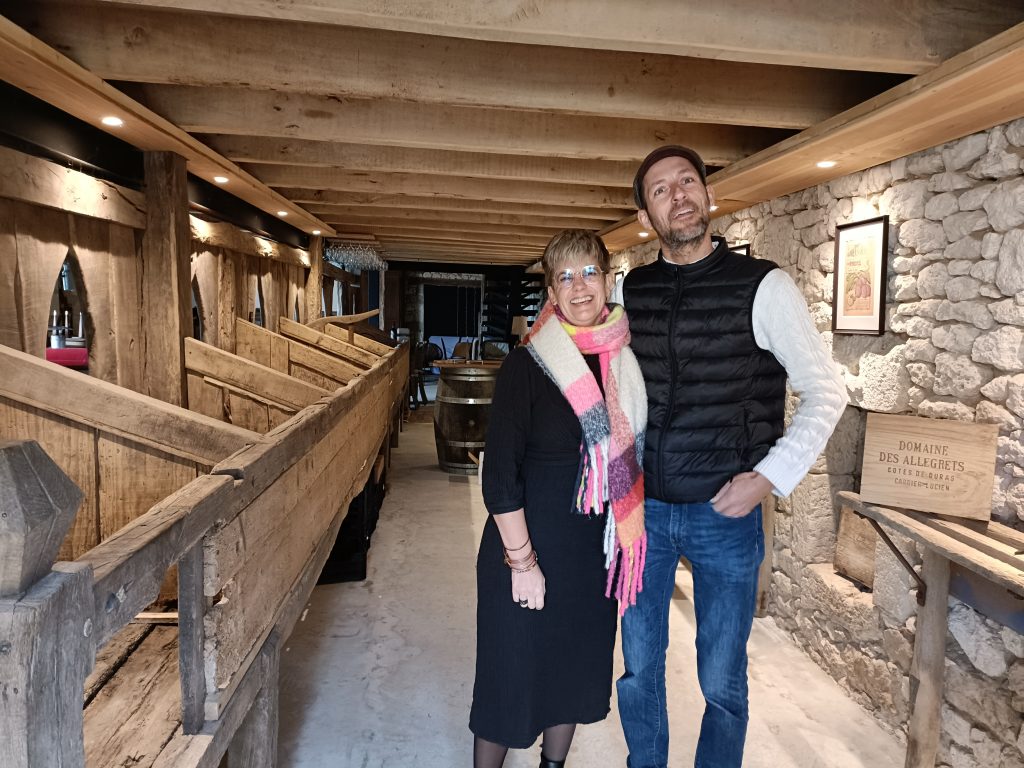I’ve known and loved the Domaine des Allegrets in the Côtes de Duras for about thirty years. It’s one of those places where I’ve often bought a few bottles just for me and the family. They’re always good. The Blanchard family are wonderfully welcoming too and I’ve had fun taking trips there.
It’s right on the border with the Gironde and the easternmost vineyards of Bordeaux. On my latest visit in February this year I was struck by the rapid process of grubbing up which was in full swing on the Bordeaux side of the road.
Making money, even if you make arguably the best wine in the appellation isn’t easy in Duras either. The Blanchards have long also produced pruneaux d’Agen, but Julien Blanchland has chosen to diversify his range and to look to other ways of adding value to his offer.
I have to admit, however, that I was prepared to be underwhelmed by the new additions to the range, which pander to the crazes for natural and also yellow wine. I then tasted the new 2021 Malbec with no added sulphur and was quite pleasantly surprised, but it’s angular fruit quality is not, I think, a patch on that in the estate’s (cheaper) traditional top red bled, ‘Voyage d’Oenos’ (an oak-aged blend of both Cabernets and Merlot) and one of the great bargains of Southwest France, never mind Duras. I bought a case of that, along with some of the beautifully-handled ‘Divine Alliance’, a 50-50, oak aged blend of Sémillon and Sauvignon Blanc and the miraculously good ‘Champs du Bourg’ a blend of unoaked Sémillon (70%) and Sauvignon Blanc (30%), late harvested and with 100 grams of residual sugar. It’s sold simply as ‘moelleux’. To my mind, no other wine in the world so labelled can match it.
As we left, Julien kindly gave me a bottle of his natural wine with no added sulphur ‘Marguerite’ 2022 (14% abv), the same blend as the ‘Divine Alliance with the Sémillon from 115 year-old vines. It has been macerated for four weeks on the skins and given full malo-lactic conversion. The label with a friendly cow with a Duras tag in her ear is brilliant – I’ve saved the empty bottle, but what about the wine?
I live with a fiercely dismissive critic of both orange wine and natural wine, so I served her a glass without telling her what it was and invited a few friends to try it too.
A pale gold, it’s fabulously complex with intense aromas of orange peel and tropical fruits with a hint of spice. In the mouth it’s full and rich with the flavour of quince, no more than medium acidity, very long and creamy and with a slightly tannic twist. ‘Really good!’ I enthused.
Everyone loved it. It was vaguely reminiscent of a top class dry Alsace Pinot Gris, but it what it is, nothing else and all the better for it. I want some more!
Julien’s other project is the conversion of a barn to a venue, so that folk can come on Friday evenings to enjoy the estate’s wine with good things to nibble and all to the accompaniment of live music, dancing and even the European football championships on a big screen all in ‘une ambience cosy.’
All strength to him, and if it helps balance the books, I’m even more for it, but it just goes to show that even a winemaker as gifted as Julien Blanchland, as he watches the vines been dug up across the road, surely with very mixed feelings, has to pull out all the stops just to make a living.
